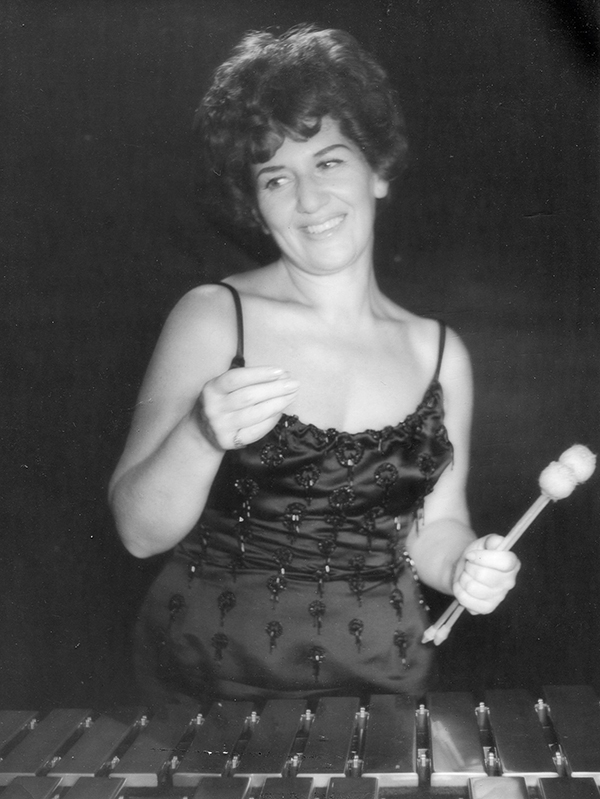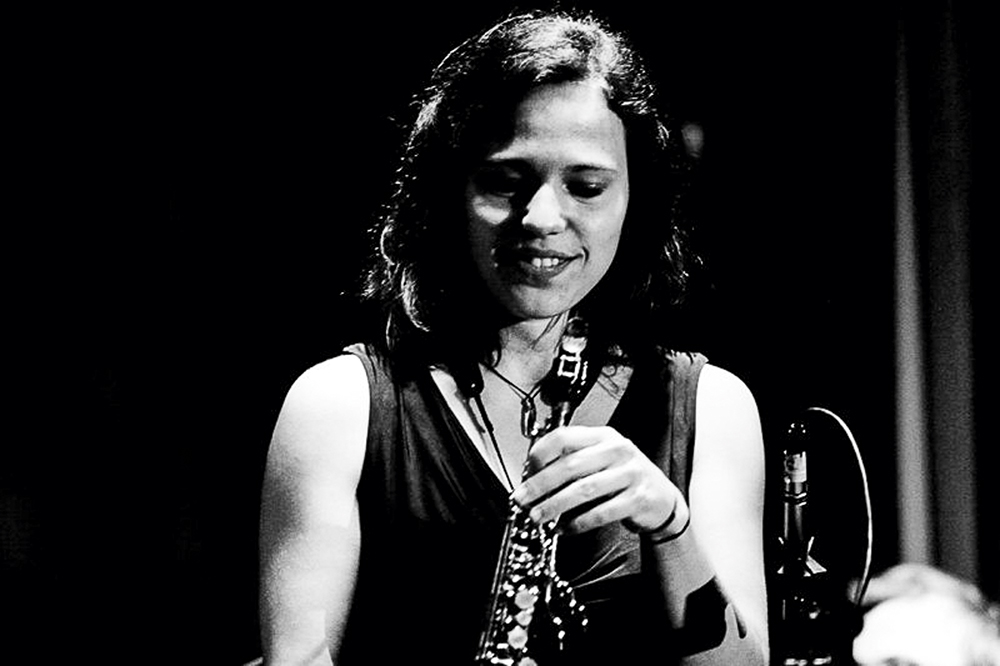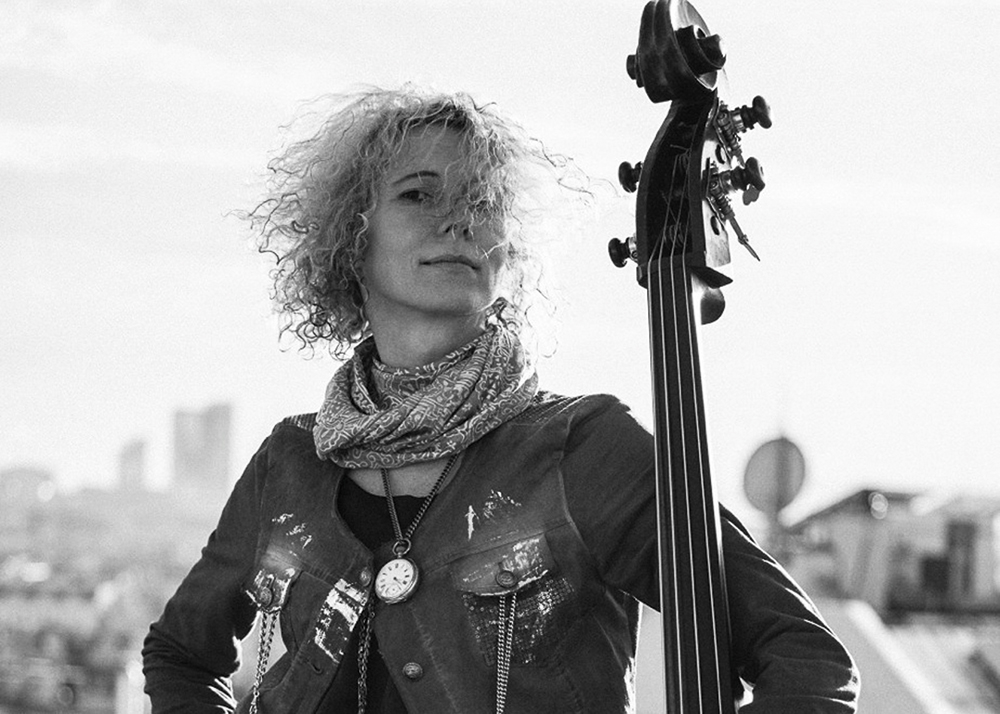Women Instrumentalists in the Austrian jazz scene
The history of Austrian jazz includes a multitude of notable women musicians. And today’s scene, in particular, is strongly characterised by female bandleaders such as saxophonist Viola Falb and double bass player Gina Schwarz. This academic year, the latter of these two—with her Gina Schwarz PANNONICA-Project—seeks to provide insight into the careers of women in jazz and promote dialogue within various Austrian jazz scenes as well as exchange with international jazz scenes.
Jazz became an important part of Austrian musical culture following World War II, with independent scenes developing in Vienna and Graz during the 1950s. Austria was the first European country to institutionalise jazz in an academic setting, with the establishment of a jazz department by the Academy of Music and Performing Arts Graz in 1965. The overwhelming majority of its students were male back then, as was generally the case among jazz instrumentalists at the time.
Even today, jazz remains a primarily male-dominated field, and women frequently occupy the place of the romantically glorified singer. The Austrian jazz scene as it exists today represents the opposite, however. Concert posters picturing young jazz players in masculine poses are indeed still fixtures at clubs, but at the same time, the scene is being expanded by formations in which women instrumentalists can realise themselves artistically and need not merely assume the role of the “side woman”.

A look at the women who work in jazz calls gender-specific abilities, responsibilities, and identities into question. And discussions of their function as role models for future women jazz musicians lead to deconstruction of the gender-specific categorisation of instruments, among other things.
Even back in the 1950s, the Austrian jazz scene could already boast one instrumentalist who played an instrument “untypical” of women: Viennese-born vibraphonist Vera Auer (1919–1996), who was among the first European women jazz musicians to add modern jazz to their repertoire. Auer had graduated from the Vienna City Conservatory as a pianist, and she also played the accordion. Though she first worked as an accordionist, Auer later on worked mainly as a vibraphonist, performing together with guitarist Attila Zoller (1927–1998). Following initial success in a radio competition for amateurs, she shifted to the professional realm and founded her own ensemble in the Viennese jazz scene: the Vera Auer Combo, which included prominent musicians such as Hans Salomon (*1933) and Joe Zawinul (1932–2007). In the 1960s, following several years spent in Frankfurt, Vera Auer lived and worked primarily in the USA, where she continually developed her style, collaborated artistically with well-known jazz musicians, and published her own texts and poems.
Aus den Jahrgängen 1920 bis 1955 sind kaum österreichische Jazzinstrumentalistinnen bekannt. Eine Ausnahme bildet die Schlagzeugerin Ursula Anders (*1938), die nicht nur als Friedrich Guldas Nachlassverwalterin Bekanntheit erlangte. Nach einem Schlagzeug-Studium in Salzburg entwickelte sich eine intensive Zusammenarbeit mit dem (Jazz-)Pianisten und Komponisten Friedrich Gulda im Bereich der freien Musik ab dem Jahr 1975. Gulda widmete ihr die Werke Opus Anders (1981) und Concerto for Ursula (1983). Auftritte, bei denen beide unbekleidet auf der Bühne performten, erregten öffentliches Aufsehen.
There is evidence of hardly any other women jazz instrumentalists who were born between 1920 and 1955. One notable exception, however, is the drummer Ursula Anders (*1938), who was famous for being more than just the trustee of Friedrich Gulda’s estate. After having studied percussion in Salzburg, 1975 saw her begin developing what would become an intense working relationship with (jazz) pianist and composer Friedrich Gulda in the field of free music. It was to her that Gulda dedicated his works Opus Anders (1981) and Concerto for Ursula (1983). Appearances in which both performed naked on stage made public waves.

From the 1980s onward, women instrumentalists ceased to be merely peripheral figures, instead becoming fixtures of the Austrian scene. Characteristic of this development was how the scene’s own musical style also opened up to influences from other genres, with a commensurate number of crossover projects. The individuals involved here included the pianist and composer Adriane Muttenthaler (*1955), who had trained at Vienna’s mdw and at the Vienna City Conservatory. Muttenthaler, who is still active today, brings together jazz and classical music as leader of the jazz sextet CRISS – CROSS. The percussionist Ingrid Oberkanins (*1964), on the other hand, studied subjects including school music education and music history as well as classical percussion, and she followed her formal studies with instruction in jazz and non-European rhythms. As a percussionist, Oberkanins now works across multiple genres together with ensembles and individual artists (Vienna Art Orchestra, C. Muthspiel, Percussiontrio Rhythmusa).
In the present-day jazz scene, more and more women musicians are liberating themselves from the attribution of “side woman” and putting the focus on their own projects. mdw graduate Viola Falb (*1980) includes elements of free jazz, folk music, and chamber music in her compositions. And with projects including Falb Fiction, phone, and Kitsch ’n’ Glory, she has not only attracted media attention but also received numerous awards. Composer, singer, and electronic musician Susanna Ridler (*1968), for her part, can be found in the border regions between jazz, electronic music, improvised music, and literature. With her electronic jazz pop project [koe:r], she experiments with a synthesis between artificial and acoustic sounds while linking the traditional and the modern with her own individual stylistic approach.

Bassist and band leader (Woodclock, Jazzista, SchwarzMarkt) Gina Schwarz (*1968), currently the only woman jazz instrumentalist to teach at a jazz and/or popular music department at a public university in Austria, received a commission to organise a concert series as part of Porgy&Bess Stageband’s 2017–18 season. Under the motto “Starke Stimmen” [Strong Voices], the Gina Schwarz PANNONICA-Project is bringing together musicians from the (inter)national jazz scene to artistically reinforce the Stageband while also participating in workshops and discussions at the mdw’s Department of Popular Music. This project’s namesake, Pannonica de Koenigswarter (1913–1988), was one of the most important women champions of modern jazz and an individual who also broke with the prevailing social conventions of 1950s America to actively combat the difficulties that disadvantaged African-American jazz musicians faced at the time. With her project, Gina Schwarz makes possible discussions and dialogues involving international musicians from various genres, generations, and countries. Her autumn 2017 guests include composer Tanja Brüggemann and visual artist Conny Zenk (A), trombonist Karin Hammar (SWE), and pianist Julia Hülsmann (D).
Gina Schwarz PANNONICA-Project (project team: Gina Schwarz and Magdalena Fürnkranz) is a project of the Department of Popular Music mounted with friendly support from the platform Gender_mdw. Further information on the workshops and concert series can be found at www.mdw.ac.at/gender/pannonica-project
Event note: Friday, 17 November 2017, 3.00 p.m.
Podium discussion “If you want to go fast, go alone. If you want to go far, go together” (Moderation: Rosa Reitsamer) as part of “15 Jahre ipop” [15 Years of ipop], with guests including Hildegard Bernasconi & Gabriele Rummel (Frauen Musik Büro Frankfurt), Tanja Brueggemann (composer), Helene Griesslehner (Music Women Austria), and Conny Zenk (visuals, installations) in the Joseph Haydn-Saal at Anton-von-Webern-Platz 1, 1030 Vienna.

